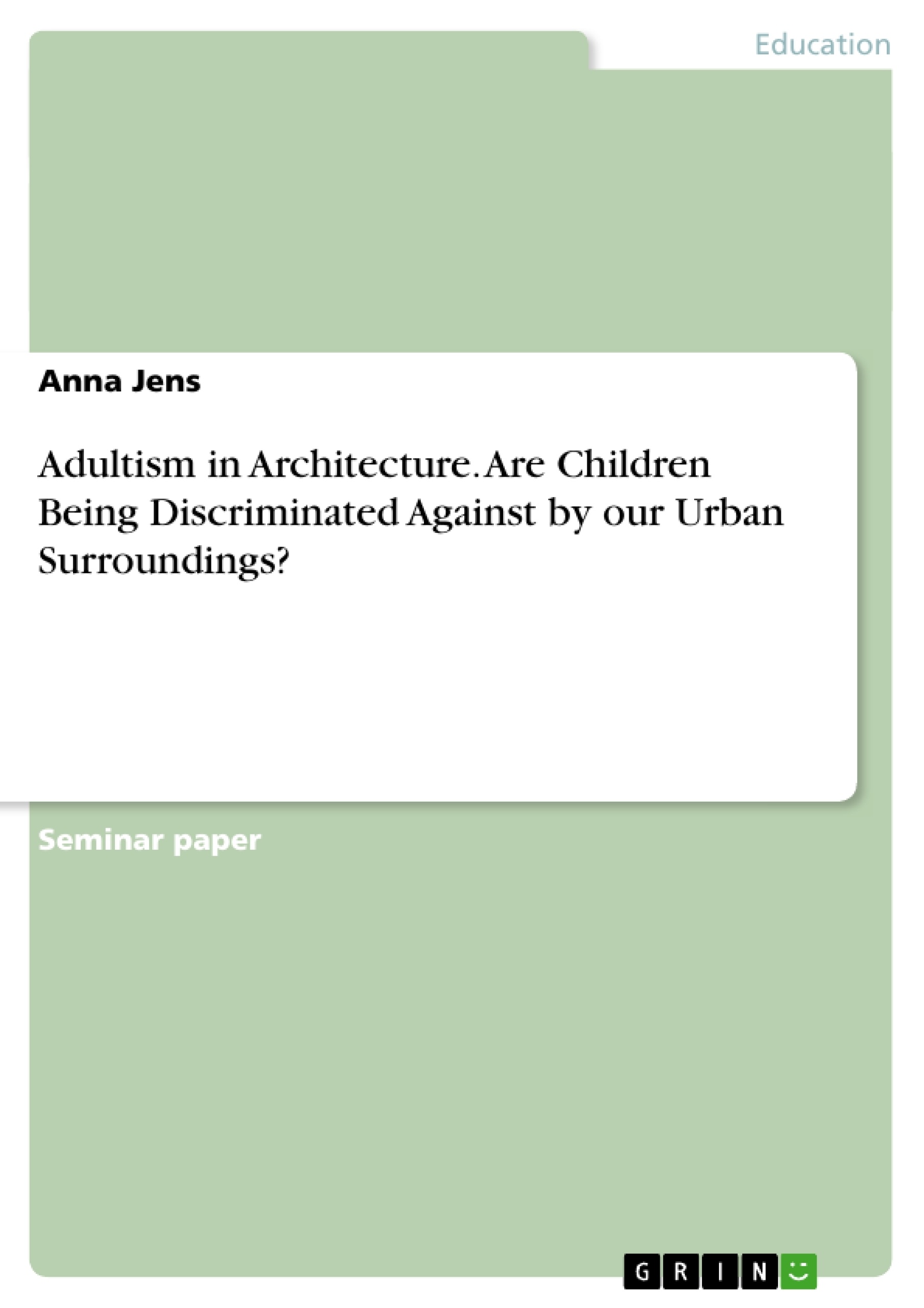This paper will present the idea that adultism, the discrimination against children in society, can be exhibited in a physical nature as well as a mental nature. When we look closely at our buildings and our urban surroundings, we discover for whom they were designed, and more importantly, for whom they were not designed.
Not only does this tell us a lot about the distribution of power in society but also how we have accepted this order of things. The standard against which we have historically measured all things, has been healthy, male adults. The result of this order is not only that its makes the lives of the affected individuals, in this case the children, less convenient and comfortable, but it also can lead to very dramatic outcomes, when for example the emergency planning of buildings only takes adults into consideration.
Table of Contents
- Abstract
- Introduction
- Can Architecture Discriminate?
- Man Is The Measure Of All Things
- Outside
- Inside Private Homes And Public Buildings
- Berlin Building Code
- “Barrierefreies Bauen”
- Emergency Planning
- Conclusion
Objectives and Key Themes
This paper aims to demonstrate how adultism, the discrimination against children, manifests physically in architecture and urban design. It explores how the built environment reflects societal power structures and reveals who it is designed for and, more importantly, who it is not designed for. The paper investigates whether this exclusion leads to inconvenience, discomfort, and even life-threatening consequences for children.
- Adultism in architecture and urban planning
- The reflection of societal power structures in the built environment
- The impact of architectural design on children's lives and well-being
- Analysis of German building codes and their consideration of children's needs
- The role of architecture in emergency planning and its implications for children
Chapter Summaries
Abstract: This abstract introduces the concept of adultism as discrimination against children, arguing that this manifests both mentally and physically, particularly in architecture and urban design. It highlights how the built environment reveals power imbalances and how design choices, often excluding children's needs, can lead to negative consequences ranging from inconvenience to life-threatening situations, especially regarding emergency planning.
Introduction: The introduction defines adultism as age-based discrimination and cites John Bell's work on the subject, emphasizing the societal disregard for children's perspectives and their exclusion from decision-making processes. The paper's objective is to examine how architectural design physically discriminates against children by analyzing urban spaces and German building codes, particularly concerning accessibility and emergency planning, thereby illustrating the often-overlooked phenomenon of physical adultism.
Can Architecture Discriminate?: This chapter explores how architecture, through its design and the space it allocates, reflects societal power dynamics. Using examples like gothic cathedrals, it illustrates how architecture can be designed to convey power and influence feelings. The chapter then analyzes how urban spaces primarily cater to able-bodied, adult men, leaving children with limited influence and access. The author questions why the built environment is so often geared toward this specific demographic, even touching upon the disproportionate provision of women's restrooms.
Keywords
Adultism, architecture, children's rights, urban design, accessibility, discrimination, power structures, building codes, emergency planning, societal inequality, German building regulations, child-friendly design.
Frequently Asked Questions: A Comprehensive Language Preview
What is the main topic of this paper?
This paper explores the concept of adultism in architecture and urban design. It examines how the built environment reflects societal power structures and discriminates against children, leading to various negative consequences ranging from inconvenience to life-threatening situations.
What are the key themes discussed in the paper?
Key themes include adultism in architecture and urban planning, the reflection of societal power structures in the built environment, the impact of architectural design on children's lives and well-being, analysis of German building codes and their consideration of children's needs, and the role of architecture in emergency planning and its implications for children.
How does the paper define adultism?
The paper defines adultism as age-based discrimination, highlighting the societal disregard for children's perspectives and their exclusion from decision-making processes. It focuses on how this discrimination manifests physically in the built environment.
What specific examples are used to illustrate adultism in architecture?
The paper uses examples such as the design of gothic cathedrals to illustrate how architecture conveys power and influence. It also analyzes how urban spaces primarily cater to able-bodied, adult men, neglecting the needs and perspectives of children. The disproportionate provision of women's restrooms is also mentioned.
What is the paper's analysis of German building codes?
The paper analyzes German building codes ("Berlin Building Code" and "Barrierefreies Bauen") and their consideration (or lack thereof) of children's needs in terms of accessibility and safety, particularly in emergency situations.
What role does emergency planning play in the paper's argument?
The paper emphasizes the significant implications of architectural design for children's safety during emergencies. It highlights how the built environment, often designed without children in mind, can exacerbate risks and create life-threatening situations for them.
What is the overall conclusion of the paper?
The paper concludes that architecture and urban design often reflect and perpetuate societal power imbalances, resulting in the exclusion and discrimination against children. It advocates for a more inclusive and child-friendly design approach, acknowledging the importance of children's perspectives and needs in shaping the built environment.
What are the key words associated with this paper?
Key words include Adultism, architecture, children's rights, urban design, accessibility, discrimination, power structures, building codes, emergency planning, societal inequality, German building regulations, and child-friendly design.
What are the chapter summaries included in the preview?
The preview includes summaries of the Abstract, Introduction, and the chapter "Can Architecture Discriminate?". These summaries provide a concise overview of the key arguments and findings presented in each section.
- Quote paper
- Anna Jens (Author), 2014, Adultism in Architecture. Are Children Being Discriminated Against by our Urban Surroundings?, Munich, GRIN Verlag, https://www.hausarbeiten.de/document/286965



